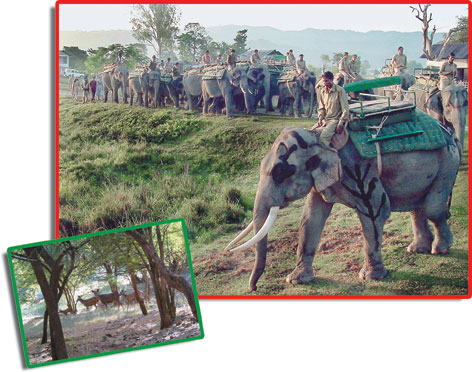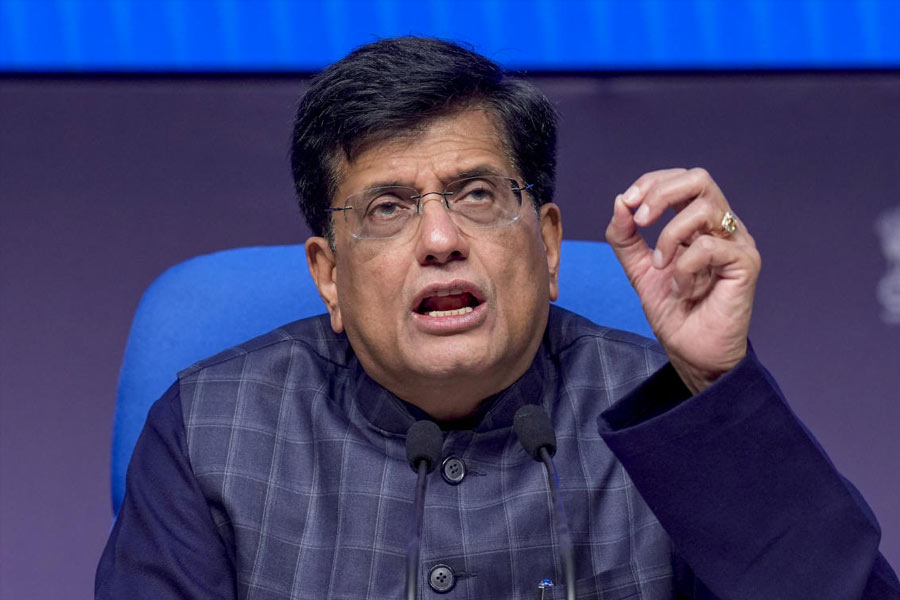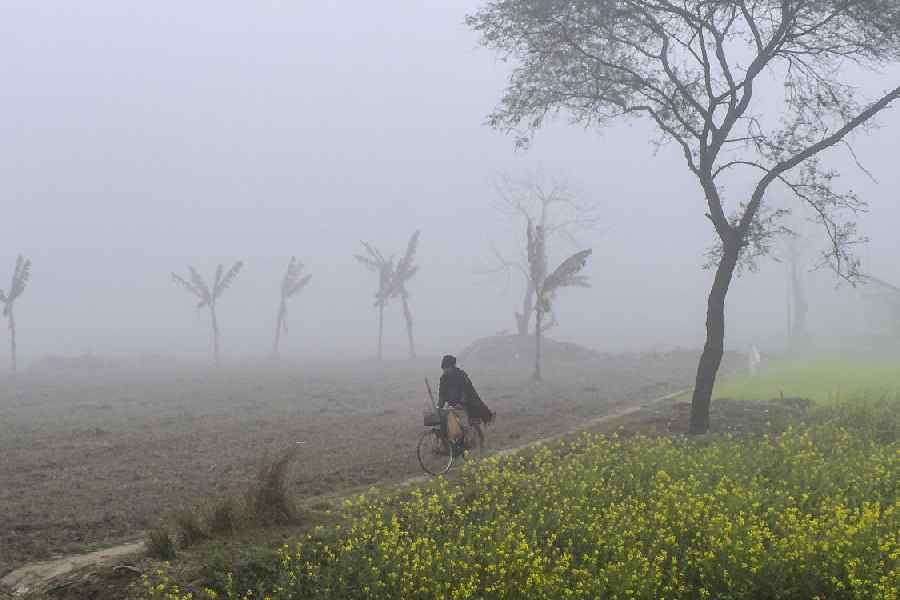 |
Do you have ambitions of being a big game hunter? Do you fancy yourself posing regally with bandook in hand and foot placed on a dead animal? If you do have such ambitions, there can be just one response: forget it.
The age of the maharajas and big game hunters is well and truly over. Modern man must work to protect the few animals that are left. So, for animal lovers who?d like to get close to nature, the best bet is a quick trip to a national park. As for shooting: don?t forget your 5megapixel digital hi-tech wonder that fits into the palm of your hand.
Thanks to the success of efforts such as Project Tiger, these national parks have become major tourist attractions. So the next time you hear the call of the wild, pack your rucksacks and head off into the jungle. We?ve looked at the parks that are considered the best destinations for animal lovers in India.
Bandhavgarh National Park
Bandhavgarh in Umaria district, Madhya Pradesh is the original tiger land. Once a hunting reserve of the royal family of Rewa, it was declared a national park in 1968. Spread over 437 sq km, the park offers the chance to spot leopards, bears, wild boars nilgais, chitals and chinkaras along with its famed tigers.
The Bandhavgarh National Park is located in a valley of the Vindhya range and the plains have a lot of grass and reed-covered wetlands that attract a variety of birds including kingfishers, egrets and vultures. The best way to explore Bandhavgarh is on elephant-back, an experience that is bound to take you back to the days of the Raj and thrilling tiger hunts, though the only shooting you?ll be allowed to do here is with a camera. The chances of spotting a tiger are quite good here and if you?re lucky, you could also spot one of the famous Rewa white tigers.
If riding on elephant back is not your cup of tea, you could opt for jeep safaris. Besides wildlife, Bandhavgarh is also famous for the archaeological remains of the Kalchuri period that have been found here. Overlooking the park is the majestic 14th century Bandhavgarh fort. The best time to visit is from mid-November to June.
Getting there: You can fly to Khajuraho, 230 km from Bandhavgarh, and then travel by road. The nearest railhead is at Umaria, 30 km away. Madhya Pradesh State Transport bus services are available from Rewa, Satna, Katni and Umaria.
 |
Ranthambore National Park
Near Sawai Madhopur in Rajasthan, the 392-km Ranthambore National Park is famed for its tigers and was once the hunting preserve of the Jaipur maharajas.
The park?s landscape is dotted with banyan, mango, dhak and pipal trees, and it?s criss-crossed with evergreen belts. The topography is made up of massive rock formations, steep scarps, perennial lakes and streams. A favourite with wildlife photographers for its easy sightings of tigers, Ranthambore, for all its relatively small land area, has a rich diversity of both flora and fauna.
Tigers apart, one can also spot sambars, chitals, nilgais, gazelles, Indian hare and a large variety of birds here. Ranthambore Fort, on a rocky outcrop in the heart of the park, and the ruins of the old Jogi Mahal are also big attractions. The best time to visit is between October to March and April to June.
Getting there: Jaipur is the nearest airport while the nearest railhead is at Sawai Madhopur, 11 km away.
Kaziranga National Park
Kaziranga National Park in Assam is famous for its rhinos. Located on the banks of the Brahmaputra in Bokakhat, Assam, the 430 sq km park, with its swamps and tall thickets of elephant grass, is the ideal habitat for the Indian one-horned rhino. Besides this, the other major wild attractions include a large population of Indian elephants, Indian bison, hog deer, barasingha, tigers, leopards, sloth bears, capped langurs and Hoolock gibbons. It?s also an avian paradise, being mostly covered by marshy grasslands, and some of the birds that flock here include the Oriental honey buzzard, Brahmany kite, white-tailed eagle and Himalayan griffon. Migratory birds such as greylag geese, gadwalls and falcated ducks also descend on the lakes and marshy areas in winter.
The vast open country makes Kaziranga very accessible and elephant safaris the best way to explore the park. One can leave at dawn with trained mahouts and see wild elephant herds and rhinos roaming unconcernedly. The best time to visit is from mid-November to early April.
Getting there: The nearest airport is Guwahati, 217 km away. The railhead nearby is Furkating, 75 km away.
Kanha National Park
Located in Mandla, Madhya Pradesh, Kanha National Park-cum-tiger reserve covers an area of over 1,940 sq km. The major topographical feature of this region is the horseshoe-shaped valley in which the park is situated.
Experts say that Kanha is the best tiger reserve in India. The flora here is bamboo and sal forests and some dry grassland. There are herds of spotted deer, antelope and black buck to be seen. If lucky, you could also see a herd of the shy barking deer that herald the arrival of a tiger. Spotting the rare barasingha is also a possibility.
There are 175 varieties of birds in Kanha, so if you?re an amateur bird watcher, look out for herons, kites and red-breasted swallows. Elephant or jeep safaris are the best ways to explore Kanha, though it?s also possible to follow short trails on foot. Do take time out to visit the Kanha Museum that houses tribal artefacts. The best time to visit the park is between April and June and November to January. The park is closed from July to Mid- November during the rains.
Getting there:The nearest airport and railhead is at Nagpur (266 km) and Jabalpur (169 km) respectively.
Bharatpur Bird Sanctuary
Also known as the Keoladeo Ghana National Park, Bharatpur is reckoned to be one of the world?s finest bird parks, and it takes only one visit to to be convinced about this. It?s spread over only about 29 sq km but still packs quite a punch. There are nesting indigenous water birds as well as migratory water birds and water-side birds. The sanctuary is also home to deer and wild boar, amphibians and reptiles. But the main attraction here is avian: more than 300 species of birds are found in this park, 11 sq km of which are marshes and the rest, scrubland and grassland.
The numerous migratory birds that flock to Bharatpur in winter include several species of cranes, including the rare Siberian crane, pelicans, shanks, stints, wagtails, warblers, wheatears, flycatchers, buntings and pipits. Truly a bird-watcher?s paradise, the sanctuary is open throughout the year. But the best months are from August to November for resident breeding birds and October to February for migrant birds.
Birds apart, there are historical attractions in Bharatpur as well such as the Government Museum, Bharatpur Palace, Lohagarh Fort and Deeg Palace.
Getting there: The nearest airport is at Agra, 56 km away. Regular rail services connect Bharatpur with Delhi, Mumbai, Jaipur and Agra.
Corbett National Park
For lovers of Jim Corbett?s thrilling books on hunting man-eaters in the Kumaon hills, this is a must-visit. Located in the foothills of the Himalayas, Corbett is home to a variety of flora and fauna, and is famous for its wild population of big cats including tigers and leopards. It was the first sanctuary to come under Project Tiger.
Once a popular hunting ground of the British, this 1,200 sq km park has everything from hilly and riverine areas, temporary marshy depressions, plateaus and ravines. The forests have 110 tree species, 50 mammals species, 580 bird species and 25 reptile species.
Both the tiger and its prey roam freely here. Some nocturnal cats found here are the leopard cat, jungle cat and fishing cat. Sloth bears are found in the lower regions of the park while the Himalayan black bear is seen in the higher hills only. The doles or wild dogs live in the park?s southern areas along with jackals.
Jeep safaris are the most convenient way to travel inside Corbett and the best time to visit is between November 15 and June 15. Corbett closes between June 16 and November 14, when the monsoons flood the river beds and cut the tenuous road links.
Getting there: Phoolbagh, Pantnagar is the nearest airport at 50 km away. Delhi (300 km) is the nearest international airport. Ramnagar is the nearest railhead.
The Sundarbans
Welcome to the home of the Royal Bengal tiger. The Sundarbans is a magical land of mangrove forests and tiny islands that form an archipelago in this delta of two great Indian rivers: the Ganga and the Brahmaputra. Spread over 1,330 sq km, the Sundarbans National Park forms the core of this area. The islands Gosaba, Sandeshkali and Basanti form the northern boundary; on the south is the sea; to the west are the Matla and Bidya Rivers and to the east is the international boundary of Bangladesh.
The Sunderbans is home to more than 400 tigers. The Bengal Tigers have adapted themselves very well to the saline and aqua environs and are extremely good swimmers. The chital deer and rhesus monkeys are also abundant here. There?s also lots of marine life including a variety of fish, red fiddler crabs and hermit crabs. Travellers in the region are quite likely to encounter crocodiles, sunning themselves along the mud banks. The Olive Ridley sea turtle, which nests at the island of Kanak, is another inhabitant of these parts. An incredible variety of reptiles is also found in the Sundarbans including the king cobra, the rock python and the water monitor. The endangered river terrapin is found on the Mechua Beach while barking deer can be seen on Haliday Island. Also part of the park is the Sajnakhali Bird Sanctuary, which boasts of seven colourful species of kingfisher, white-bellied sea eagles, plovers, lap-wings, curfews, whimbrels, sandpipers and the occasional pelican.
The ideal time to visit is during September and May while winter is the time to see the mighty Royal Bengal Tiger sun-bathing on the river banks.
Getting there:The nearest airport is Calcutta at 112 km away while Canning is the nearest railhead from Piyali, which forms the gateway into the Sunderbans. Once inside the delta, the Sundarbans are accessible only by riverine waterways on motor launches.
Gir Wildlife Sanctuary and National Park
Gir, 42 km from Junagadh, Gujarat, is the last bastion in India of the Asiatic lion. It was created to protect the last wild population of lions outside the African region. The Asiatic lion is slightly smaller than its African cousin and its mane is also smaller. In 1913, the lion population had fallen to just 20 animals, but now the numbers have increased to around 300.
The Gir National Park is a mixed deciduous forest with teak, flame of the forest, some acacia and banyan trees. The trees are mostly broad-leaved and evergreen, giving the area a cool shade and moist air. Besides the lion, the most commonly-found predator in Gir is the leopard. In fact, Gir is home to one of the largest leopard populations in India.
The other mammalian residents of Gir are sambar, chital, nilgai, chowsingha, chinkaras, langurs and hyenas. Some of the birds seen here are paradise flycatchers, Bonneli?s eagles, crested serpent eagles and flamingos.
Wildlife viewing in Gir is best done by jeep safaris. The ideal visiting time is between November and June.
Getting there:The nearest airport is Keshod (90 km) via Veraval. There are daily flights from Mumbai to Keshod. The nearest rail connection is the metre gauge rail line from Ahmedabad. It is also well connected by road from Ahmedabad via Rajkot, Junagadh and Mendarda.
Wild on
 |
Tikka Shatrujit Singh
fashion consultant
I?ve visited most of the famous Indian national parks including Corbett, Ranthambore and Kaziranga. There?s nothing as exciting as riding through a wildlife sanctuary on elephant-back, savouring the sights and sounds of the forest. Animals, I believe, are best viewed in their natural habitat. I also think wildlife trips are the best to take children on, since for them it becomes an amazing journey of discovery and adventure.
 |
NIkhil Chinappa
veejay
I enjoy wildlife and roughing it out on an adventure holiday. Of the many national parks I?ve been too, I like the Pandharpur National Park in south Maharastra and Nagarcoil in Karnataka best. The experience and sights at both these were memorable.
 |
Pallabi Chatterjee
actress
I was only seven when my mother, brother and I accompanied my dad on an outdoor shoot to Hazaribagh. I still remember the place vividly especially the sambar and nilgai that we came across. I especially recall the nights we spent there in a bungalow. All night we?d hear bears growling and hyenas. We could even hear tigers roar as they came to a nearby stream to drink water.
Useful sites
• www.indianwildlifeportal.com
• www.indian-wildlife.com
• www.indiawildliferesorts.com
• www.theindiatravel.com
• www.travelmasti.com
• www.makemytrip.com
• www.eholidaysindia.com










